… to work on customer projects. We’ll pick up on corsets when we get back. In the meantime, take note of the new “Projects”! Lots of good stuff happening.
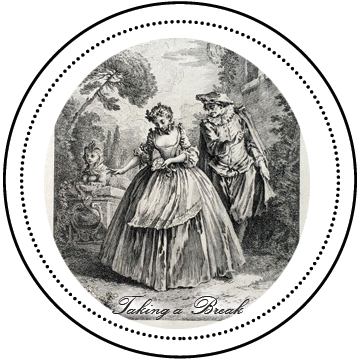

… to work on customer projects. We’ll pick up on corsets when we get back. In the meantime, take note of the new “Projects”! Lots of good stuff happening.
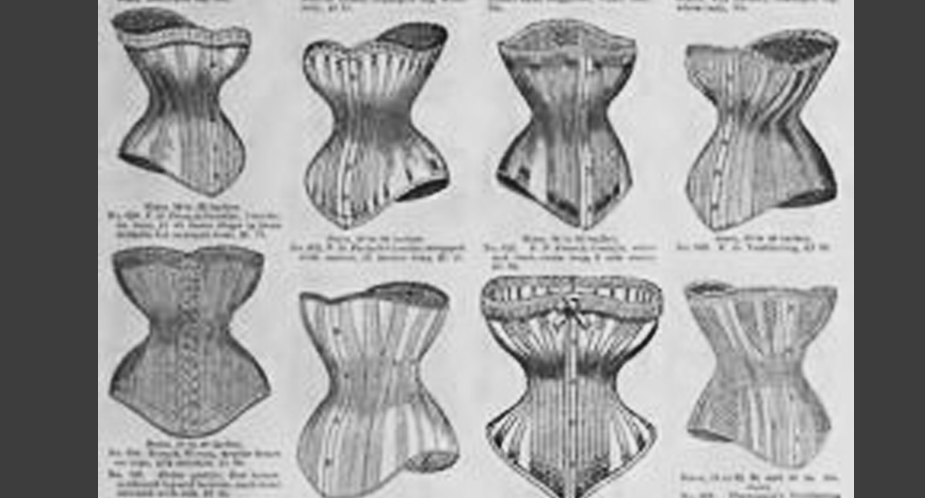
restrictive and tightly cinching corsets to be made. One model of the early 1880’s had 20 shaped pieces and 16 whalebones on each, as well as the spoon busk. (Catalog page from 1886 showing multi-pieced corsets with spoon busks)

and very expensive, but they still do the same job of tucking in the tummy to make a lovely flat front of the skirt. (1873 patent sketches with photo of modern spoon busks which now come in many finishes, colors, and weights)
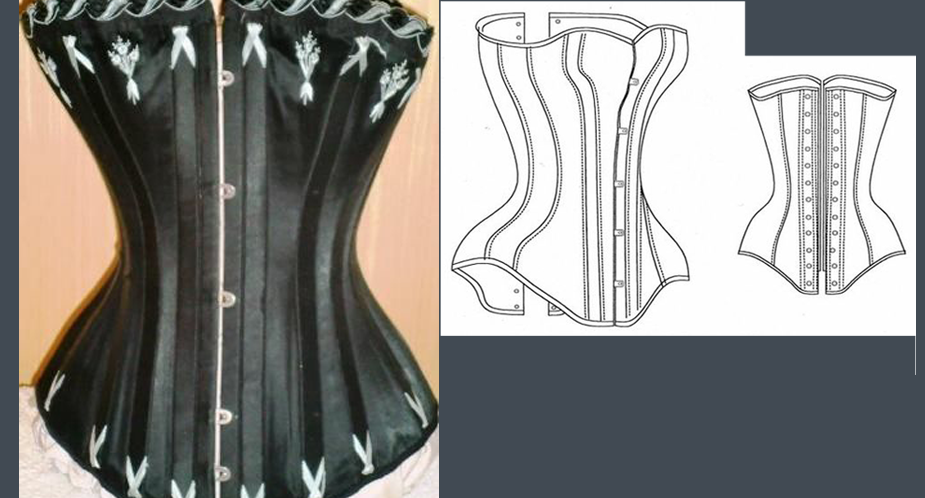
that looked somewhat like a soup ladel (“busk en poire”) had been invented, and was a key innovation to keeping the tummy tucked in, and handling the torque between top and bottom until about 1889 when the next style of corset would take over. (Extant corset and pattern of the …
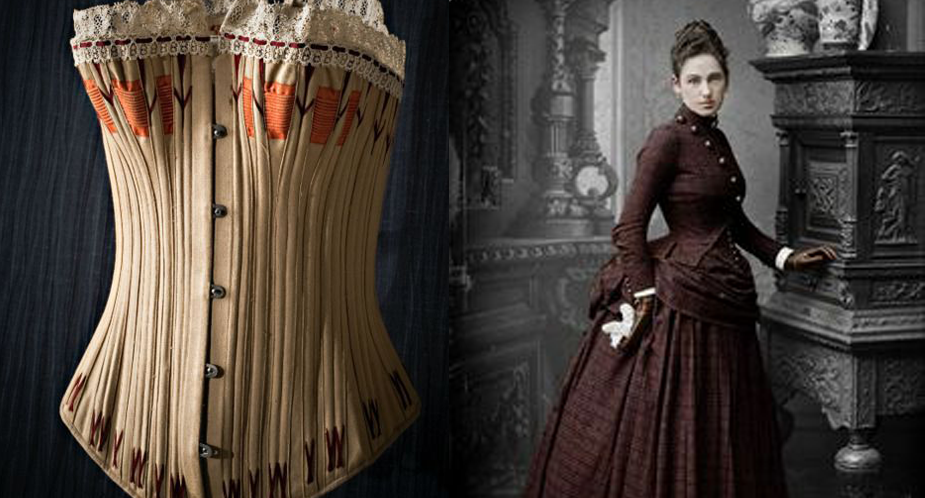
the same as in the mid-19th century: either with gussets and a basque, or in separate shaped pieces (like in the 1860’s). (1880’s Norwegian gusseted extant corset and photo of the type of silhouette it made)
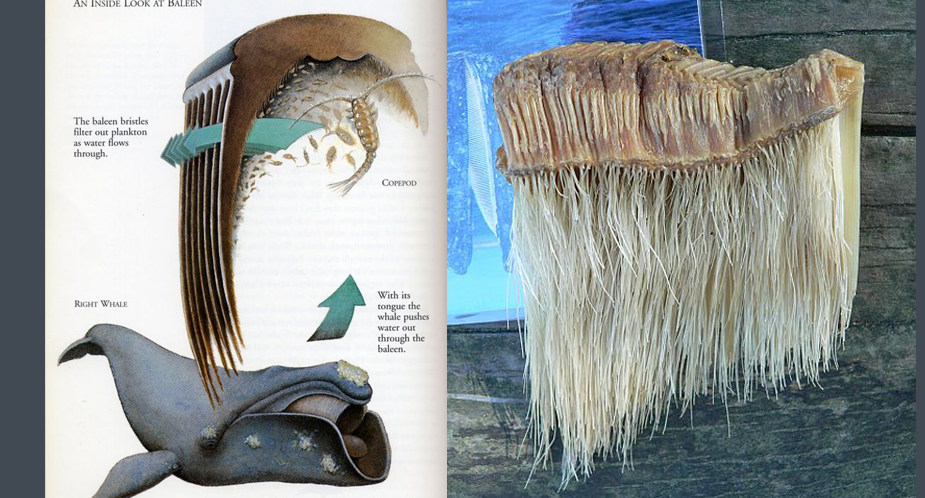
boning in corsets. Whalebone is actually whale baleen, the cartiledge from a whale’s mouth. It was basically stiff, but had enough flexibility or elasticity to work well with curves. Unlike modern plastics which have been used to replace it today, whalebone would not re-shape with body heat or vary with …
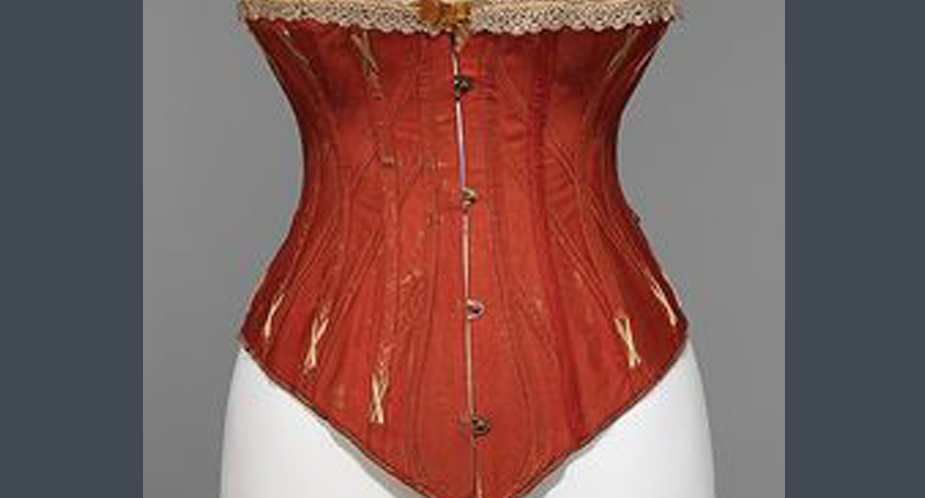
in such high demand that it became scarce and very expensive, so substitutes such as cane were used for boning (stiffening) corsets. (Extant 1880’s corset lightly boned with whale baleen and cording)
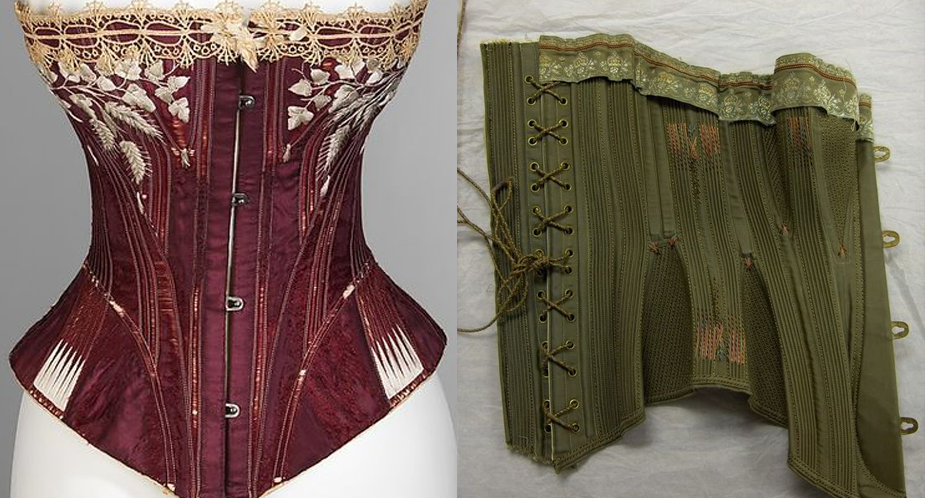
and steel became used more and more. (1876 and 1887 extant corsets showing metal, reed, and corded boning)
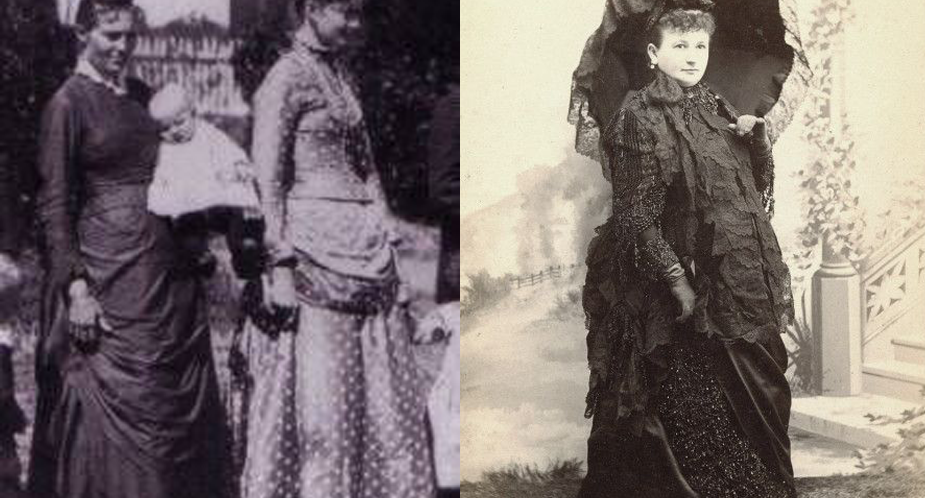
and size (and we might add “squishiness”, the great difficulty became how to keep the long armorlike look on every woman without the corset riding up and wrinkling, and the bones from breaking at the hips (which happened often going from extremely full hip and bust to a very tiny …
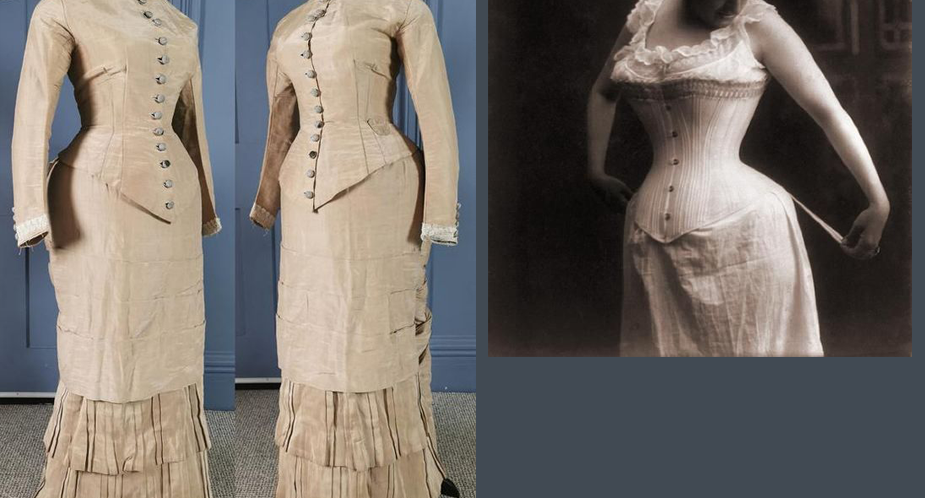
and early 1880’s enveloped the hips, waist, and upper torso. (Extant and photo: early 1880 cuirasse bodice and long corset)